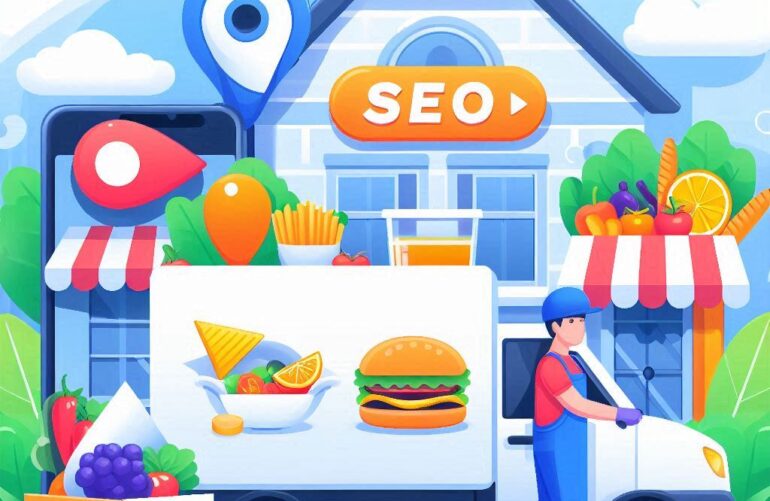Are you finding the competitive terrain of food subscription services a bit rocky to navigate? In 2024, standing out in this crowded market requires more than just having great products – it’s about mastering smart SEO strategies.
Small to medium-sized business owners often face the challenge of competing with large corporations for visibility.
However, I invite you to consider three powerful tactics that can elevate your brand’s search engine ranking and attract more subscribers.
1) Use LLMs (AI) to Help Optimize, but Not Fully Write Content
AI in Content Strategy: Smart, If You’re Smart About It
AI tools like GPT-4, Google Gemini, and Microsoft Copilot can suggest ideas and topics to explore in an article, suggest keywords, and even draft initial content outlines. This integration often results in a more streamlined workflow.
However, always remember that Google values unique insights from experts. If you incorporate LLMs into your content generation, make sure you’re following Google’s E-A-T (Expertise – Authority – Trust) policies.
A refresher course on Google E-A-T:
- Expertise: Your content should be created by someone with relevant knowledge and experience on the topic. In the context of AI-assisted content, this means ensuring you understand the topic well enough to curate and refine the suggestions provided by AI.
- Authoritativeness: The source of the information, whether you or the AI you leverage, should be established as a credible voice in the field. While LLMs can be impressive, cite credible sources and data to bolster your content’s authority.
- Trustworthiness: Ultimately, your content should be reliable, accurate, and unbiased. Fact-check everything, especially AI-generated suggestions, and ensure your content reflects a neutral and informative viewpoint.
It’s also important to note that all LLM’s have a certain knowledge cut-off (for example, GPT-4 Turbo is only trained until up until around mid-2023). Therefore, they’re entirely incapable of producing any cutting-edge information by themselves.
While there’s no evidence to suggest that Google penalizes websites only for AI content and, in fact, is supportive of ethical AI usage, it’s up to you to fact-check any content AI produces because Google will penalize you for spreading misinformation.
So, while AI provides an effective toolset for SMB owners looking to scale content quickly and efficiently, it’s crucial to maintain a human touch to ensure the content remains engaging and authentic.
2) Beyond Keywords: Understanding Semantic Search
Semantic SEO & Schema Markup
Forget the days of keyword stuffing! Google’s Hummingbird update fundamentally changed how search engines interpret user queries.
Today, it’s not just about matching keywords but about grasping the intent and context behind a search. Think of it like a project manager understanding a client’s question to provide the most relevant answer.
Semantic SEO involves structuring your content to answer questions people are really asking. For instance, when someone searches for a subscription for a weekly meal prep service like HelloFresh, they’re likely looking for options, pricing comparisons, and dietary information.
It’s a richer and more dynamic form of SEO compared to traditional keywords, helping consumers pinpoint you much more easily.
So where does schema markup enter the picture?
Imagine you’re a vendor in a busy street market, and you’re trying to shout above the noise. Schema markup is like having an eye-catching sign that directs customers right to your stall.
This code helps search engines understand your content better and enhances the display in search results through rich snippets, price ranges, ratings stars, or availability status.
Implementing schema markup increases click-through rates by making your listings more visible and attractive on SERP.
While schema markup might sound complex, implementing it on your website is more manageable than you might imagine. Here are a couple of ways to get started:
Use a Schema Markup Generator
Several user-friendly online tools can help you generate schema markup code for your content, and these tools often have simple interfaces where you can input details about your food subscription service, like recipe types, ingredients, or pricing.
The tool then generates the corresponding schema markup code you can easily copy and paste onto your website.
A few services worth checking out are:
- Schema Markup Generator by Merkle
- Rank Ranger Schema Markup Generator
- Technical SEO’s Schema Markup Generator
Leverage Existing Plugins
Many popular content management systems (CMS) like WordPress offer plugins specifically designed for schema markup.
These plugins can simplify the process by providing user-friendly interfaces for adding schema markup to your web pages and blog posts.
3) Build Out Topic Clusters: Revolutionize Your Content Strategy!
Harnessing the Power of Topic Clusters
Gone are the days when single, standalone articles could dominate search results. Welcome to the era of topic clusters, a revolutionary SEO strategy that turns your website into a content powerhouse!
What exactly is a topic cluster? Imagine creating a hub (known as the “pillar page”) around which revolves multiple spokes – these are your related articles or blog posts.
Each piece addresses specific aspects of the main topic and links back to your pillar page, creating an interconnected content ecosystem.
This architecture not only enhances user experience by providing comprehensive coverage but also boosts your site’s SEO by keeping visitors engaged and reducing bounce rates.
Implementing Topic Clusters: A Step-by-Step Guide
First, identify a broad theme relevant to your food subscription service.
For example, ‘organic eating’.
This becomes your pillar content. Next, brainstorm subtopics like organic recipes, the benefits of organic food, or how to source organic ingredients affordably.
Each subtopic deserves a detailed article that delves into specifics while linking back to and from the pillar page.
By doing so:
- You establish topical authority in Google’s eyes;
- Visitors find all they need on one well-organized site (who wouldn’t appreciate that!);
- Google bots crawl through interconnected links, resulting in better indexing.
Be sure every link serves a purpose! Every connection should provide additional value or context for readers exploring your cluster network.
Redefine User Experience with Strategic Content Placement!
As simple as it sounds yet powerful beyond measure – adopting this approach means no reader leaves unsatisfied; instead they depart enriched with knowledge tailored just right for their needs.
Think about it: Isn’t it time we started treating our websites more like living ecosystems than static billboards? Don’t we want crawler bots to not only index our site but also know they can come back for related expert content?
Take the Leap, and Make the Change!
Embrace these SEO strategies and see your food subscription service flourish. Remember, implementing what we’ve discussed isn’t just following trends; it’s about setting you apart from the competition.
From my own journey in digital marketing, I’ve seen firsthand how impactful these advanced tactics can be when executed well.
Start building those topic clusters and optimize with AI guidance today!
Are you ready to elevate your online presence? Let’s make 2024 a landmark year for your business!







